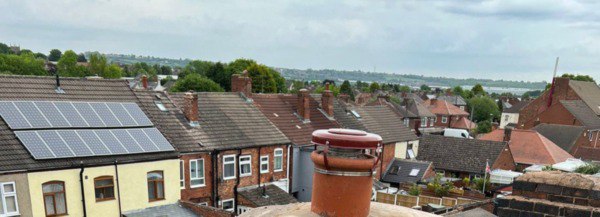Repairing Mansard Roofs: When to Patch and When to Replace
Mansard roofs, with their distinctive four-sided design, add architectural beauty and character to homes. However, due to their steep slopes and flat upper surfaces, they can be prone to wear and tear over time. Knowing when to patch minor issues and when to replace sections or even the entire roof is essential for maintaining the structural integrity and aesthetics of your property. At DHG Roofing Shefford, we specialise in repairing and replacing mansard roofs across Shefford, Bedfordshire. In this blog post, we’ll guide you through the signs to watch for and the best course of action to ensure your roof remains in top condition.
Understanding Mansard Roofs and Their Unique Challenges
Mansard roofs are known for their dual-pitched design, which offers additional living space under the roof. However, this design also presents unique challenges. The flat top section is more prone to water pooling, while the steep slopes can experience increased wear from rain, wind, and debris. Additionally, mansard roofs often feature multiple materials, such as slate or tiles for the steep sides and asphalt or metal for the flat top, each of which requires specific maintenance.
Signs Your Mansard Roof Needs Repair
There are several warning signs that indicate your mansard roof may need attention:
- Water Leaks: The most obvious sign of roof damage is water leaking into your home. If you notice damp patches, water stains on ceilings or walls, or dripping water during rain, it’s essential to address the issue immediately.
- Missing or Broken Tiles/Slates: The steep sides of a mansard roof can be particularly vulnerable to tile or slate damage. Strong winds, falling branches, or general wear and tear can lead to missing or broken tiles, which compromise the roof’s protective layer.
- Sagging or Dipping Sections: If any part of the roof appears to be sagging or dipping, this could be a sign of structural damage, possibly due to prolonged water exposure or material degradation.
- Mould or Moss Growth: The accumulation of moss or mould is not only unsightly but can also indicate moisture retention, which can lead to further damage if left unchecked.
- Cracked Flashing: The metal flashing around vents, chimneys, and other roof penetrations is crucial for preventing water intrusion. If you notice cracks or gaps in the flashing, it’s a sign that repairs are needed.
When to Patch Your Mansard Roof
In many cases, small problems with a mansard roof can be effectively addressed with patch repairs. Here’s when patching is the best option:
- Localised Damage: If the issue is confined to a small area, such as a few broken slates or tiles, patching is a cost-effective solution. A professional roofer can replace the damaged materials without disturbing the surrounding roof structure.
- Minor Leaks: If you catch a water leak early and it’s limited to a small section of the roof, a patch repair can stop further damage. Replacing broken tiles or sealing gaps can prevent moisture from spreading into the home.
- Flashing Repairs: Cracked or damaged flashing around chimneys, vents, or skylights can often be patched without the need for a full roof replacement. Re-sealing or replacing the flashing can restore the roof’s waterproof barrier.
Patching is an ideal solution when the damage is minor and isolated. However, it’s essential to ensure that the underlying structure is sound, as patching over significant issues can lead to further problems down the line.
When to Replace Your Mansard Roof
There are times when a simple patch repair won’t suffice, and a full or partial replacement is necessary to protect your home. Here’s when to consider a replacement:
- Extensive Damage: If the damage covers a large portion of the roof, such as widespread missing tiles, significant water leaks, or structural sagging, it’s often more practical and cost-effective to replace the entire section rather than continually patching.
- Ageing Roof: Mansard roofs, like any roof, have a lifespan. If your roof is over 20 years old and showing signs of wear, it may be time to consider a replacement. Older roofs are more susceptible to leaks, drafts, and other issues that can compromise the overall integrity of your home.
- Multiple Repairs: If your mansard roof has required multiple repairs over a short period, it may indicate that the roof is reaching the end of its useful life. In this case, investing in a full replacement can save you money in the long run by avoiding constant repairs.
- Structural Issues: If there are signs of structural problems, such as sagging or dipping sections, a replacement may be necessary to ensure the roof’s stability. Addressing structural damage early can prevent more severe issues, such as collapse or water damage to your home’s interior.
Conclusion
Knowing when to patch and when to replace a mansard roof is key to maintaining its function and appearance. At DHG Roofing Shefford, we understand the unique challenges that come with mansard roof repairs and replacements. Our expert team can assess the condition of your roof and provide tailored solutions that ensure your home remains protected.
Call us on: 01462 411 095
Click here to find out more about DHG Roofing Shefford
Click here to complete our contact form and see how we can help with your roof.

